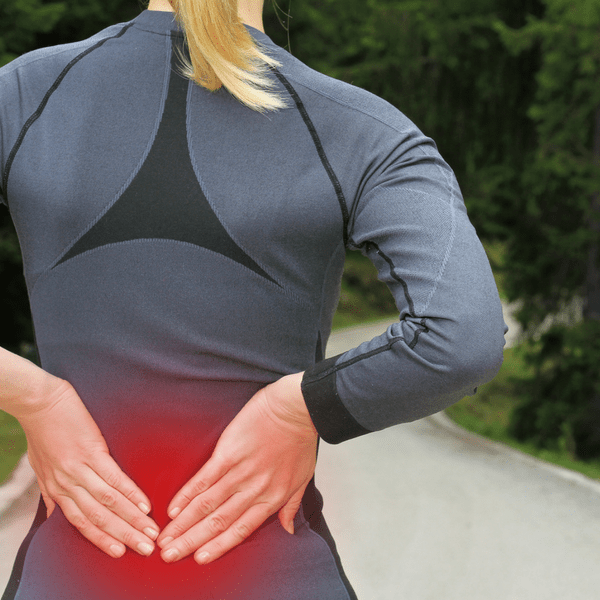In my last blog post, I discussed on a very basic level what sciatica is (leg pain) and where it can come from (almost anywhere!). In this blog post, we will look specifically at one of the possible causes. I say possible and not probable on purpose here and let me tell you why. Low back pain, including sciatica, is still a huge unknown. At the risk of being very unpopular or sounding ignorant, I am still going to publish the following fact because IT IS TRUE – 85% of low back pain cases are not truly or accurately diagnosed. So keep in mind that while I am going to cover five possible causes for sciatica the reality is we, the medical community at large, don’t have clear cut answers on how to diagnose and treat low back pain yet. That is why there is such high variability with treatment for the same ailment. With that said, today we are going to look at what your symptoms might look like if you had sciatica that was caused by a disc bulge or herniation and what you could do to diagnose it and treat it.
If you have been told or suspect you have a disc bulge or herniation causing your low back pain or sciatica let’s first begin with some facts and statistics that will hopefully put your mind at ease. 73% of people with sciatica caused by disc herniation have a good chance of seeing the improvement they want WITHOUT surgery in twelve weeks. Now twelve weeks can feel like an eternity when you have raging sciatica but if surgery scares you, there is hope. Furthermore it should be noted that there is “limited evidence…available to support some aspects of surgical practice” for disc herniation that does not have red flags present (see my post about red flags) such as leg weakness, changes in bowel/bladder, etc. The other good news is this: on top of symptoms resolving within 12 weeks, the bulge itself will resolve as well within a few months. See my post on disc bulges for more information.
Now let’s get into the meat and potatoes of what might be causing your pain. For people experiencing sciatica that is caused from a herniated or bulged disc, these people generally feel worse bending forwards and better bending backwards. This makes sense and I will tell you why. Most, if not all disc bulges go posteriorly or push out towards your back. When you bend forwards, it puts pressure on the front of the disc which in turn puts pressure on the weak part of the disc where the bulge or herniation is taking place. If this bulge or herniation pushes out far enough, it can rub up against a nerve root which can cause the symptoms you are experiencing. So how do you know if this is you for sure? Read on my friend.
When physical therapists talk about disc herniations, you might hear them ask if your symptoms are peripheralizing or centralizing. What does that mean you ask? Peripheralizing means your symptoms are going farther and farther down your leg. Centralization, is the opposite – your symptoms are moving towards your back. These two phrases are important for what I am going to tell you next. If a physical therapist were to evaluate you, he or she would probably have you bend forwards upwards of ten times like you were trying to touch your toes. Now this may seem sadistic but it has a reason – we want to see what bending forwards does to your symptoms. If it makes the pain shoot farther and farther down your leg with every repetition, we start to suspect a disc bulge or herniation as the cause. The next step is to see what bending backwards will do to your symptoms. With hands on hips and feet hip’s width apart, slowly bend backwards like you are trying to watch a plane fly across the sky. Warning: the first few reps will most likely be painful. Proceed with caution. What we are looking for is an easing of symptoms in the LEGS and perhaps a decrease of pain in the back. It does not always work this way, in fact, the low back itself can often times feel a bit worse as the leg pain eases but don’t worry, that too will subside. So, in conclusion to our self-diagnosis, if your symptoms peripheralized with bending forwards and centralized with bending backwards you might have a disc bulge. More importantly, the following steps I am going to teach you, should make you feel better.
Before I go any further, I need to give credit where credit is due. Robin McKenzie is the Godfather of everything I am about to tell you and oh, by the way, he wrote a book called, “Treat Your Own Back.” He goes into way more detail than I could ever go into in one blog post. If you find this information helpful, it would probably be worth spending $10 to make your symptoms go away. However, while you are waiting for that book to show up in the mail, try these exercises for sciatica pain.
Step 1: Lie flat on your stomach for 2 minutes. Symptoms should start to travel back up your leg towards your low back. For people with a serious flare up, you might need to start with one or maybe even two pillows under your stomach and slowly work towards being able to get your stomach on the bed. This might take several minutes but the result should always be the same – centralization.
Step 2: While still on your stomach, prop up onto your elbows like you are watching T.V. It is important to keep the muscles in your low back as relaxed as possible. Hold this posture for another two minutes. At the risk of sounding like a broken record, I will say it again – your symptoms should be IMPROVING with this technique. If at any time you think your sciatica is getting worse, STOP.
Step 3: If you have made it to this step, that means the first two steps have given you to some degree, relief. The last step is a prone push up. From the position you are in now put your palms flat on the bed or floor. (Note: for this last step, it may be more effective to do this on the floor but if you have fear about never getting off the floor, please by all means, stay on your bed or couch.) Push your chest up from the surface you are lying on making sure to keep the low back and hip muscles totally relaxed. Also, your hips should never come off the surface they are on, just your chest and upper abdomen. This is by far the most important and difficult part. Your arms and chest should be the only ones working. All low back muscles should be making every possible effort to relax. As you push up, try to slowly exhale to further the relaxation you are trying to achieve. Once you get up as far as possible for your body, pause and then slowly lower yourself back down. Congratulations you did your first prone press up! Now do nine more. Then rest. Then two more sets of ten. Steps 1-3 should be completed one to two hours when your symptoms are acute and then taper off as indicated as your symptoms improve.
At the end of this therapy session, you should feel better. If not, you may not have accurately diagnosed your symptoms. If that’s the case, don’t worry, there are four more posts that can potentially solve your leg pain.
I hope this blog post was helpful to you in some capacity whether it was assuring you that your pain will most likely resolve at some point in the near future or actually giving YOU the tools you need to help yourself. As always, if you have any questions about your symptoms, don’t hesitate to call my personal cell phone at 479-402-9400.




